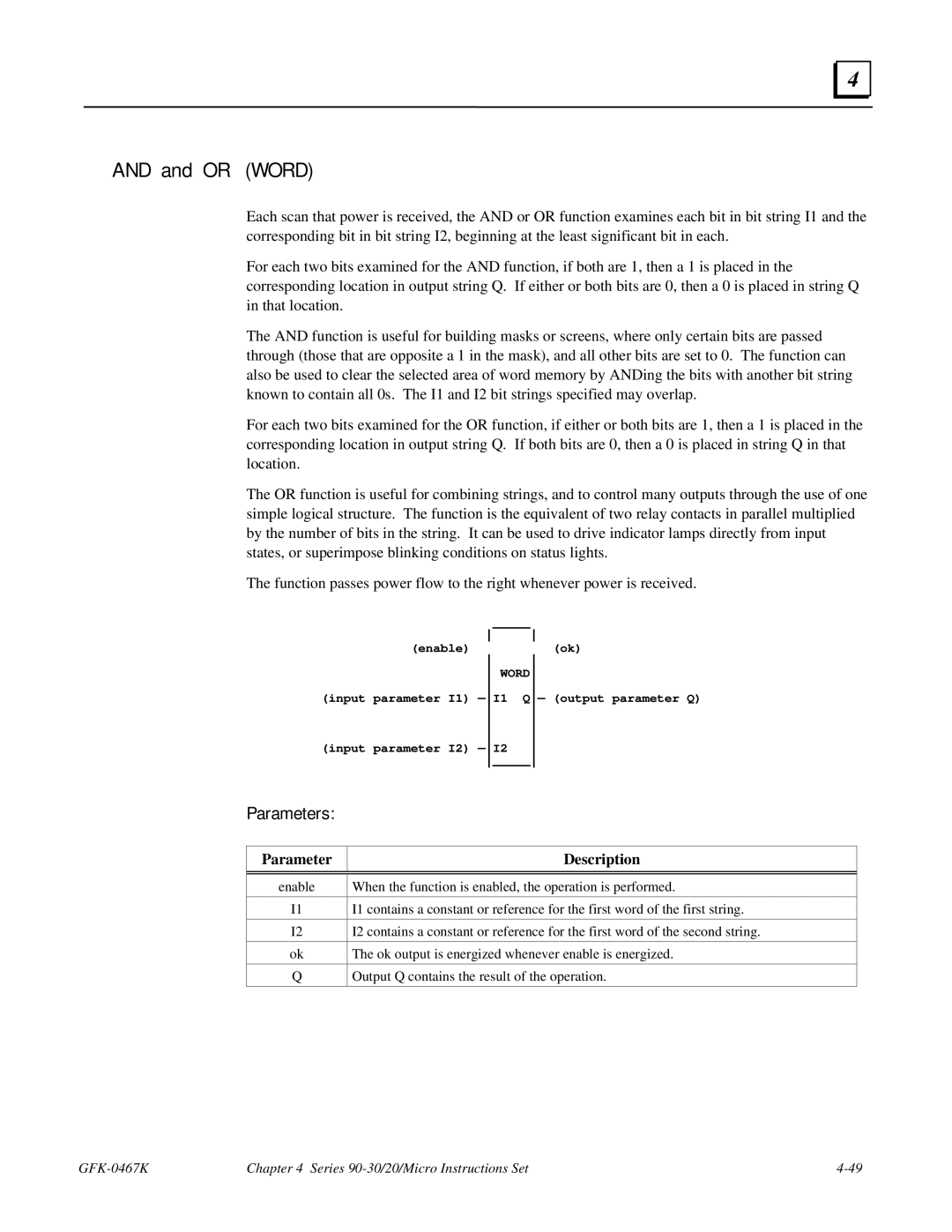4 |
AND and OR (WORD)
Each scan that power is received, the AND or OR function examines each bit in bit string I1 and the corresponding bit in bit string I2, beginning at the least significant bit in each.
For each two bits examined for the AND function, if both are 1, then a 1 is placed in the corresponding location in output string Q. If either or both bits are 0, then a 0 is placed in string Q in that location.
The AND function is useful for building masks or screens, where only certain bits are passed through (those that are opposite a 1 in the mask), and all other bits are set to 0. The function can also be used to clear the selected area of word memory by ANDing the bits with another bit string known to contain all 0s. The I1 and I2 bit strings specified may overlap.
For each two bits examined for the OR function, if either or both bits are 1, then a 1 is placed in the corresponding location in output string Q. If both bits are 0, then a 0 is placed in string Q in that location.
The OR function is useful for combining strings, and to control many outputs through the use of one simple logical structure. The function is the equivalent of two relay contacts in parallel multiplied by the number of bits in the string. It can be used to drive indicator lamps directly from input states, or superimpose blinking conditions on status lights.
The function passes power flow to the right whenever power is received.
| _____ | |
| ||
(enable) |
| (ok) |
| ||
| WORD | |
| ||
(input parameter I1) | Q— (output parameter Q) | |
| ||
| ||
| ||
(input parameter I2) | ||
| _____ |
Parameters: |
|
|
|
Parameter | Description |
|
|
|
|
enable | When the function is enabled, the operation is performed. |
|
|
I1 | I1 contains a constant or reference for the first word of the first string. |
|
|
I2 | I2 contains a constant or reference for the first word of the second string. |
|
|
ok | The ok output is energized whenever enable is energized. |
|
|
Q | Output Q contains the result of the operation. |
|
|
Chapter 4 Series |
